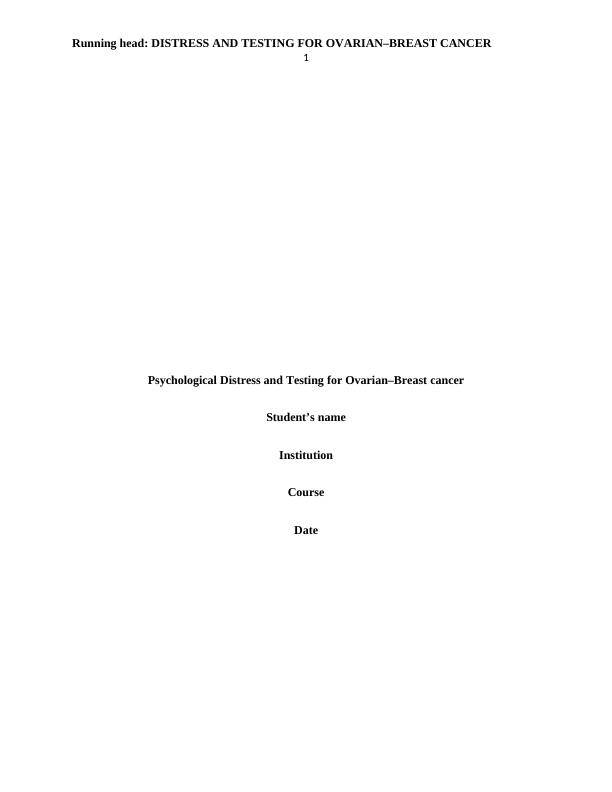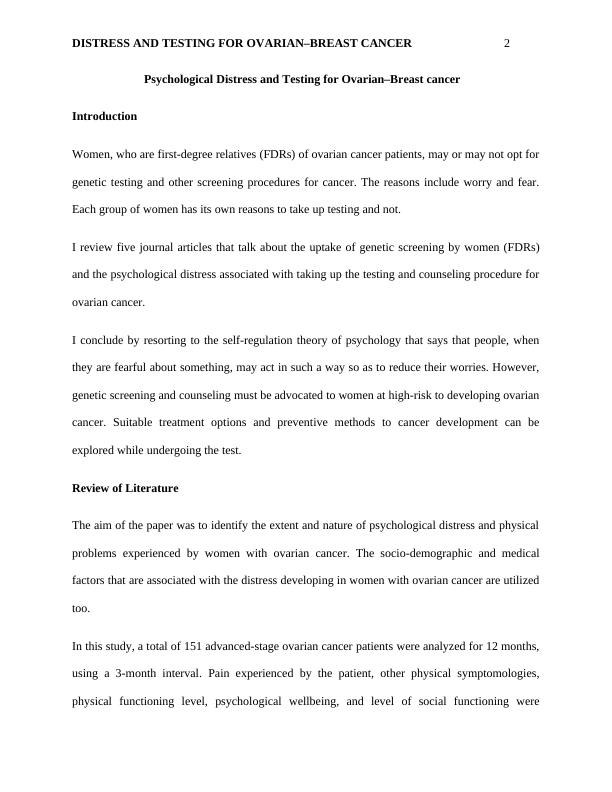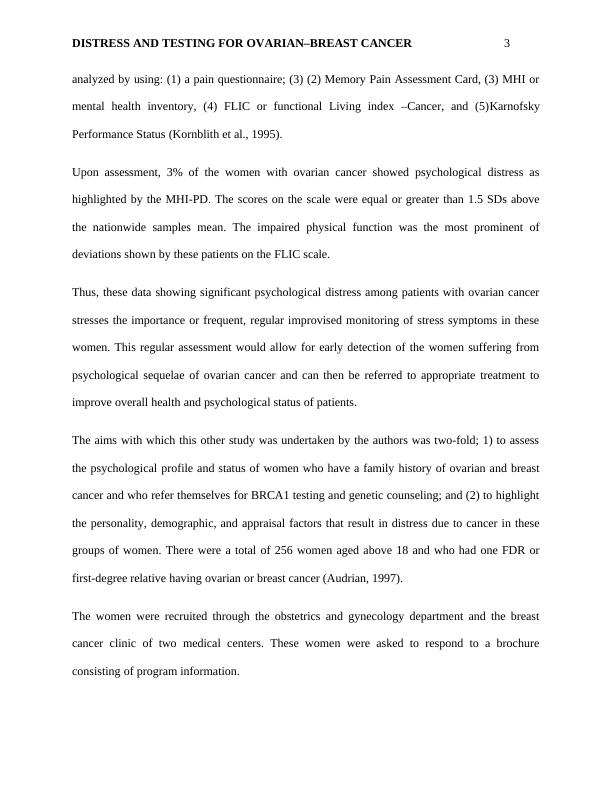Ask a question from expert
Assignment on Breast Cancer PDF
7 Pages1686 Words244 Views
Added on 2019-12-28
Assignment on Breast Cancer PDF
Added on 2019-12-28
BookmarkShareRelated Documents
Running head: DISTRESS AND TESTING FOR OVARIAN–BREAST CANCER1Psychological Distress and Testing for Ovarian–Breast cancerStudent’s nameInstitutionCourseDate

DISTRESS AND TESTING FOR OVARIAN–BREAST CANCER2Psychological Distress and Testing for Ovarian–Breast cancerIntroductionWomen, who are first-degree relatives (FDRs) of ovarian cancer patients, may or may not opt forgenetic testing and other screening procedures for cancer. The reasons include worry and fear.Each group of women has its own reasons to take up testing and not.I review five journal articles that talk about the uptake of genetic screening by women (FDRs)and the psychological distress associated with taking up the testing and counseling procedure forovarian cancer.I conclude by resorting to the self-regulation theory of psychology that says that people, whenthey are fearful about something, may act in such a way so as to reduce their worries. However,genetic screening and counseling must be advocated to women at high-risk to developing ovariancancer. Suitable treatment options and preventive methods to cancer development can beexplored while undergoing the test.Review of LiteratureThe aim of the paper was to identify the extent and nature of psychological distress and physicalproblems experienced by women with ovarian cancer. The socio-demographic and medicalfactors that are associated with the distress developing in women with ovarian cancer are utilizedtoo.In this study, a total of 151 advanced-stage ovarian cancer patients were analyzed for 12 months,using a 3-month interval. Pain experienced by the patient, other physical symptomologies,physical functioning level, psychological wellbeing, and level of social functioning were

DISTRESS AND TESTING FOR OVARIAN–BREAST CANCER3analyzed by using: (1) a pain questionnaire; (3) (2) Memory Pain Assessment Card, (3) MHI ormental health inventory, (4) FLIC or functional Living index –Cancer, and (5)KarnofskyPerformance Status (Kornblith et al., 1995).Upon assessment, 3% of the women with ovarian cancer showed psychological distress ashighlighted by the MHI-PD. The scores on the scale were equal or greater than 1.5 SDs abovethe nationwide samples mean. The impaired physical function was the most prominent ofdeviations shown by these patients on the FLIC scale.Thus, these data showing significant psychological distress among patients with ovarian cancerstresses the importance or frequent, regular improvised monitoring of stress symptoms in thesewomen. This regular assessment would allow for early detection of the women suffering frompsychological sequelae of ovarian cancer and can then be referred to appropriate treatment toimprove overall health and psychological status of patients.The aims with which this other study was undertaken by the authors was two-fold; 1) to assessthe psychological profile and status of women who have a family history of ovarian and breastcancer and who refer themselves for BRCA1 testing and genetic counseling; and (2) to highlightthe personality, demographic, and appraisal factors that result in distress due to cancer in thesegroups of women. There were a total of 256 women aged above 18 and who had one FDR orfirst-degree relative having ovarian or breast cancer (Audrian, 1997).The women were recruited through the obstetrics and gynecology department and the breastcancer clinic of two medical centers. These women were asked to respond to a brochureconsisting of program information.

End of preview
Want to access all the pages? Upload your documents or become a member.
Related Documents
Breast Cancer Translational Researchlg...
|7
|1559
|160